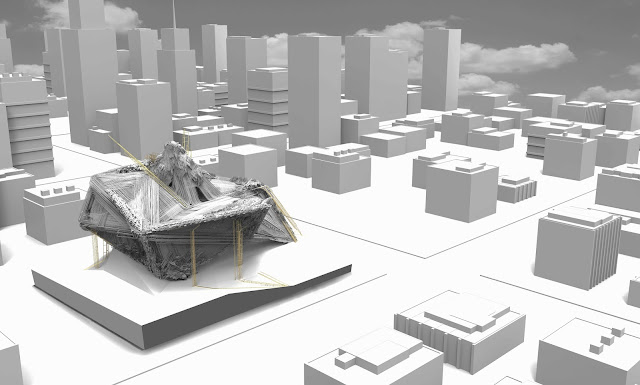Mapping and Knotting the Image
The O'Gorman House
Juan O’Gorman was an admirer of European functionalist architects,
especially Walter Gropius and Le Corbusier. His early projects were essentially
characterized by the use of reinforced concrete, asymmetrical exterior, and a
constant search for air and light. However, thanks to the influence exerted on
him by his professor, José Villagrán García, his work evolved into what has
been called "New Mexican baroque." Moreover, when he designed and
built his own house on the foothills of Pedregal de San Angel (1956), which was
subsequently demolished in 1969, he sought inspiration from the approach
described by Mathias Goeritz in his Manifiesto de la Arquitectura
Emocional, and
thus endeavored to design each space upholding the feeling that he wished to
inspire.
The OO'House
Gabriel Esquivel and Ronny Eckels
The Problem: An Un-grounding Machine—a
New Object
The problem of the O’Gorman House could be seen as an interaction
between materialistic and naturalistic thought. If we think of the O’Gorman House
as an undefined void with an asymmetrical parallelism between its surface and
the crust or synthetic nature that envelopes it, “in which the two remain
analogous and remotely connected to their common genus but where each one
spawns its own different, independent operational entities and geometries,” then the problem of the void is set on the fact that it operates at two levels.
One is the actual interior void of the object, and the other is the void left
by the disappearance of the house. These two conditions do not necessarily
synchronize the ground’s local regimes, establishing orders through the
consolidated coherence of the crust; they countermine the stratification processes
instead of supporting them, thus the importance of establishing an un-grounding
mechanism as a way to “excavate” the ground and initiate a new production.
The argument for the new house (the OO’House) could be positioned in
the relation of solid and void. There are different ways of connecting these surfaces
with a void. One is the ornamental surface, which is a visible surface
supporter that connects the void to a second crust or outside ecology.
Therefore, the void cannot be merely reduced to an underground regime; this
once again suggests the potential for devising an un-grounding machine. The
other argument is the surface-transmitter or actual figures that join with
undulating the line-work passing through the void, which binds the cavity to
the outside where the void emerges precisely out of the ambiguity of solid and
void. Negarestani notes, “The solid as an entity which
is inherently possessed by the void. The only way that the solid can initialize
its architectonic and compositional activities (processes for survival,
development, etc.) is by letting the void in the dynamic traits of solid can
only be actuated when solid is eaten, convoluted and messed up by the void.”
As part of the void complex, at a surface level, the figure operates as
a binding element where every activity of a potential solid appears as a tactic
to conceal the void to appropriate it and suppress it. The void is accommodated
into the economy of surfaces as a dwelling system. However, the figure is not just
important at a compositional level; instead, it becomes the
representational/engineering machine that will allow us to un-ground the new
interpretation of the house as an image/object that extends the onticology and
line-work of the first object.




























































